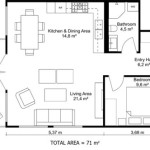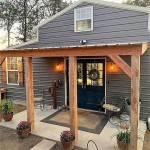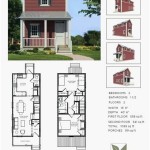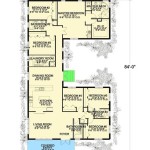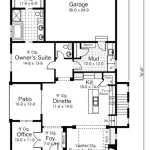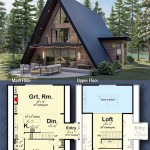Why Are Small Planes Flying Over My House Today?
The presence of small planes frequently traversing the airspace above residential areas can be a source of curiosity and, at times, concern. A variety of factors contribute to this phenomenon, ranging from standard flight training activities to specialized aerial operations. Understanding these potential reasons can alleviate anxiety and provide context for the observed aircraft activity.
One of the most common reasons for small planes flying over residential areas relates to flight training. Aspiring pilots require extensive practice to hone their skills and accumulate the necessary flight hours for certification. This training often involves repetitive maneuvers performed in designated training areas, which may overlap with populated regions. The proximity of an airport to a residential area significantly increases the likelihood of encountering training flights.
Another significant factor contributing to aerial traffic above homes is the presence of general aviation airports or airfields nearby. These smaller airports cater to private aircraft, recreational flying, and business aviation. Planes taking off from or landing at these facilities will invariably follow established flight paths, which can lead them directly over residential areas. The frequency of these overflights depends on factors such as the airport's activity level, the time of year (with increased recreational flying in warmer months), and prevailing weather conditions.
Beyond routine activities like training and general aviation, specialized aerial operations can also bring small planes into residential airspace. These operations encompass a wide range of activities, from aerial photography and surveying to powerline inspections and law enforcement patrols. The nature and purpose of these flights will dictate their altitude, route, and duration.
Proximity to Airports and Airfields
The geographical relationship between a residential area and nearby airports or airfields is a primary determinant of overflight frequency. Airports operate under strict regulations governing take-off and landing procedures. These procedures are designed to ensure safety and minimize noise impact, but they often necessitate aircraft flying over populated areas. Standard Instrument Departures (SIDs) and Standard Terminal Arrival Routes (STARs) are pre-defined flight paths that guide aircraft during departure and arrival, respectively. These routes are publicly available and can be consulted to understand typical flight patterns in a given area. Smaller general aviation airports may not have formal SIDs or STARs, but pilots still adhere to established procedures for entering and exiting the airport traffic pattern, which often leads to overflights.
The impact of airport proximity extends beyond just the presence of planes overhead. Noise levels are a significant concern for residents living near airports. Aircraft noise can disrupt sleep, interfere with communication, and potentially affect property values. Airport authorities and regulatory agencies often implement noise abatement procedures to mitigate these effects. These procedures may include restrictions on nighttime flights, preferential runway usage, and specific flight paths designed to avoid densely populated areas. However, due to safety considerations and operational requirements, completely eliminating overflights is rarely possible.
Understanding the specific operational characteristics of nearby airports is crucial for comprehending the patterns of aerial traffic. Factors such as the types of aircraft that typically use the airport, the volume of traffic during different times of day, and the presence of specific noise abatement procedures all contribute to the overall impact on surrounding residential areas. Local airport authorities are often a valuable resource for obtaining information about these factors and addressing concerns related to overflights.
Flight Training Activities
Flight training is an essential part of the aviation industry, ensuring a continuous supply of qualified pilots. However, it also contributes significantly to the presence of small planes in the airspace above residential areas. Flight training activities typically involve repetitive maneuvers, such as take-offs and landings, turns around a point, and simulated emergencies. These maneuvers are often performed in designated training areas, which may be located near airports and over populated regions.
Student pilots require extensive practice to master the fundamental skills of flight. This practice involves numerous hours of flying under the supervision of certified flight instructors. The training curriculum covers a wide range of topics, including aircraft handling, navigation, meteorology, and aviation regulations. As students progress through their training, they gradually build their skills and experience, eventually becoming proficient enough to fly independently. During this process, the repetition of maneuvers can lead to noticeable patterns of flight activity in certain areas.
The impact of flight training on residential areas is often a subject of debate. While the training is necessary for maintaining a safe and efficient aviation system, it can also contribute to noise pollution and concerns about aircraft safety. Flight schools and instructors are typically aware of these concerns and strive to minimize their impact on surrounding communities. This may involve using noise abatement procedures, avoiding densely populated areas when possible, and communicating with residents to address any concerns. Furthermore, flight schools are subject to regulatory oversight by aviation authorities, which ensures that training activities are conducted in a safe and responsible manner.
Specialized Aerial Operations
Beyond routine flight training and general aviation, specialized aerial operations constitute another category of flights contributing to the presence of small planes over residential areas. These operations encompass a diverse range of activities, each with its specific purpose and requirements. Understanding these operations can shed light on the reasons behind seemingly unusual flight patterns.
Aerial photography and surveying are common applications of small aircraft. These operations involve taking high-resolution photographs or collecting sensor data from the air for various purposes, such as mapping, environmental monitoring, and infrastructure inspection. Aircraft equipped with specialized cameras and sensors fly at specific altitudes and along predetermined routes to capture the required data. These flights are often conducted in a grid-like pattern, which can result in repeated passes over residential areas. The timing of these flights may also be influenced by factors such as weather conditions and sunlight availability.
Another type of specialized aerial operation involves powerline and pipeline inspections. These inspections are essential for maintaining the integrity of critical infrastructure. Small planes or helicopters equipped with infrared cameras and other sensors are used to detect potential problems, such as damaged insulators, corrosion, and leaks. The aircraft fly along the powerlines or pipelines, allowing inspectors to identify areas that require maintenance or repair. These flights are typically conducted at low altitudes and can be quite frequent, especially in areas with extensive infrastructure networks.
Law enforcement agencies also utilize small planes for various purposes, including aerial surveillance, search and rescue operations, and traffic monitoring. These flights can be conducted at any time of day or night and may involve rapid changes in altitude and direction. Law enforcement aircraft are often equipped with specialized equipment, such as infrared cameras and tracking devices, to assist in their operations. The presence of law enforcement aircraft overhead can be a source of concern for some residents, but it is important to remember that these flights are typically conducted in the interest of public safety.
Agricultural aviation, also known as crop dusting, is another specialized aerial operation that can bring small planes into residential airspace. This involves using aircraft to apply pesticides, herbicides, and fertilizers to crops. Agricultural aviation is a highly regulated activity, and pilots must be specially trained and certified to perform these operations safely and effectively. The timing of crop dusting flights is typically determined by the needs of the crops and the weather conditions. These flights are often conducted at low altitudes and can generate noise and odors that may affect nearby residents.
Real estate photography and videography are increasingly common uses of small aircraft, particularly drones. These are used to capture aerial views of properties for sale or lease. These flights are typically conducted at low altitudes and are relatively short in duration. While drones offer a cost-effective way to obtain aerial imagery, they have also raised concerns about privacy and safety. Regulations governing the use of drones are constantly evolving to address these concerns.
Finally, search and rescue operations often involve small planes and helicopters. These aircraft are used to search for missing persons or to provide assistance to those in distress. Search and rescue flights can be conducted in a variety of terrains and weather conditions, and they may involve flying at low altitudes and in close proximity to residential areas. The crews involved in search and rescue operations are highly trained and experienced, and they are committed to saving lives.

What Plane Just Flew Over My House Here S An Easy Way To Find Out

What Plane Just Flew Over My House Here S An Easy Way To Find Out
What It S Like To Live In Neighborhood Designed For Pilots Business Insider

What Plane Just Flew Over My House Here S An Easy Way To Find Out

Life Beneath The Deafening Roar Of Heathrow S Flight Path Wired

What Plane Just Flew Over My House Here S An Easy Way To Find Out

Alarm Bells Should Be Ringing Over Light Aircraft Noise Pollution Aviation Environment Federationaviation Federation

Sydney Airport Flight Paths To Change Over Inner West Amid Western Reshuffle

Huge Boom Over Huddersfield And Halifax As Us Military Planes Fly Past Yorkshirelive

Wide Streets Massive Garages Meet The Neighborhoods Designed For Pilots And Small Planes
Related Posts

